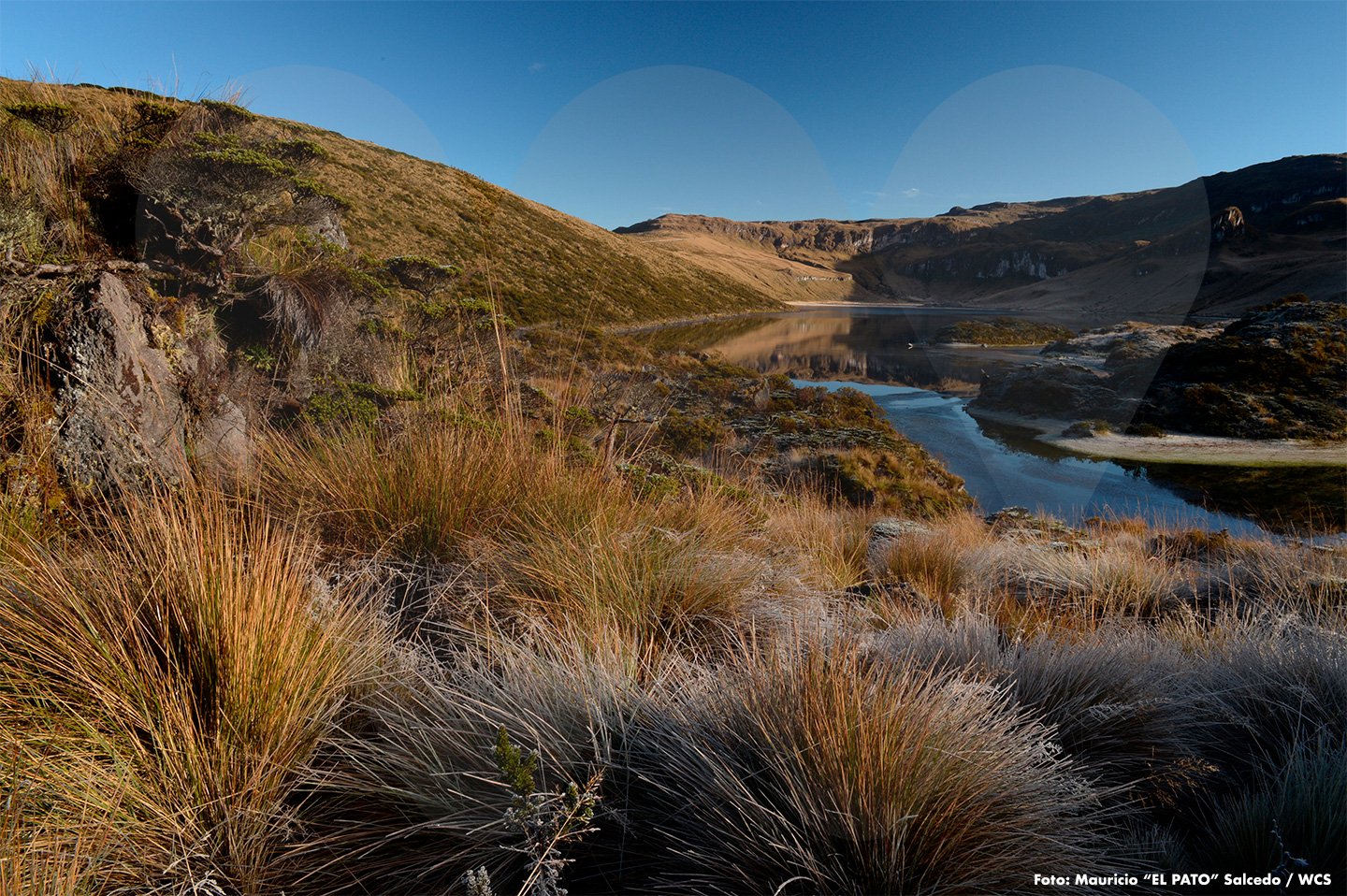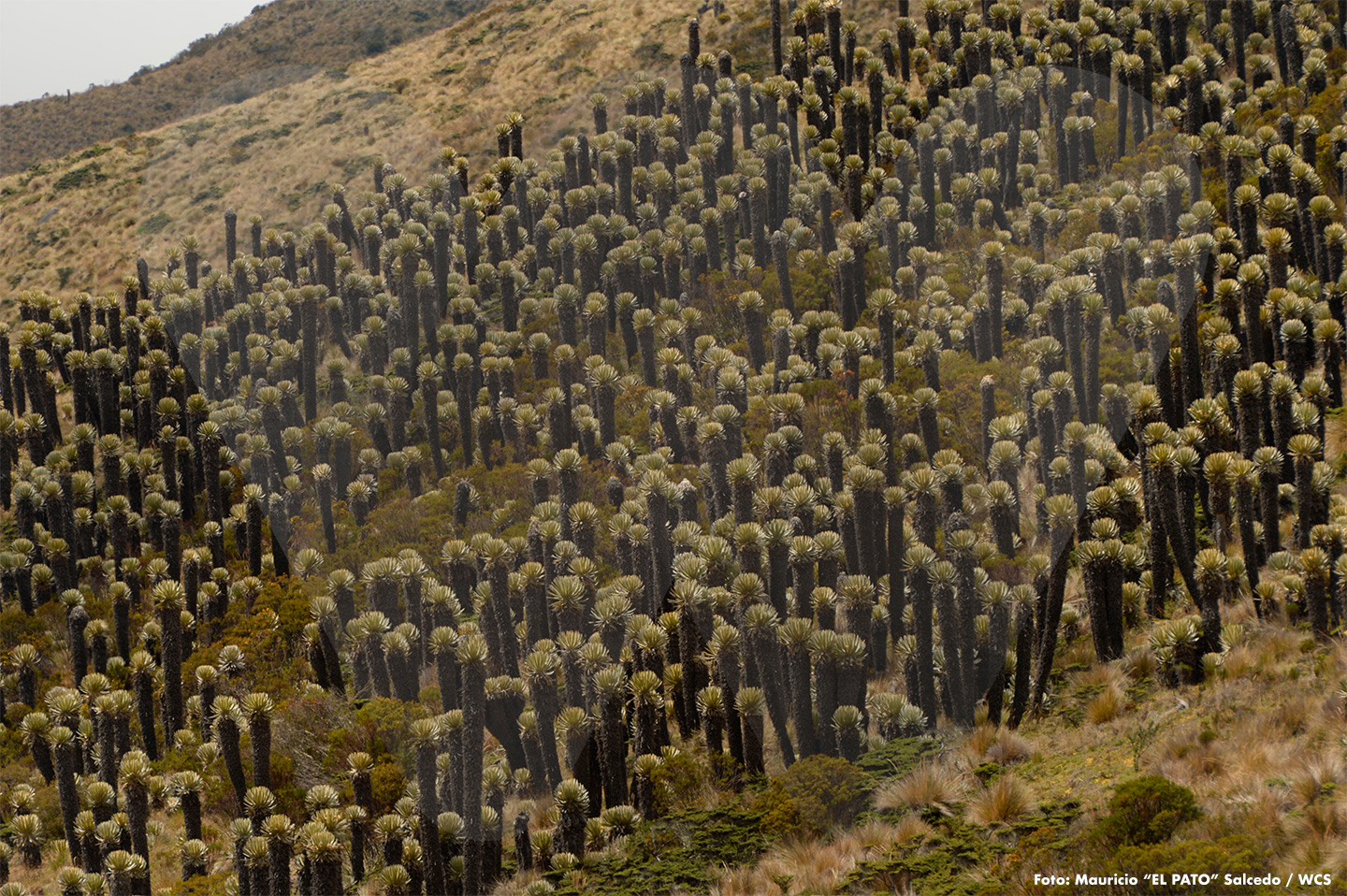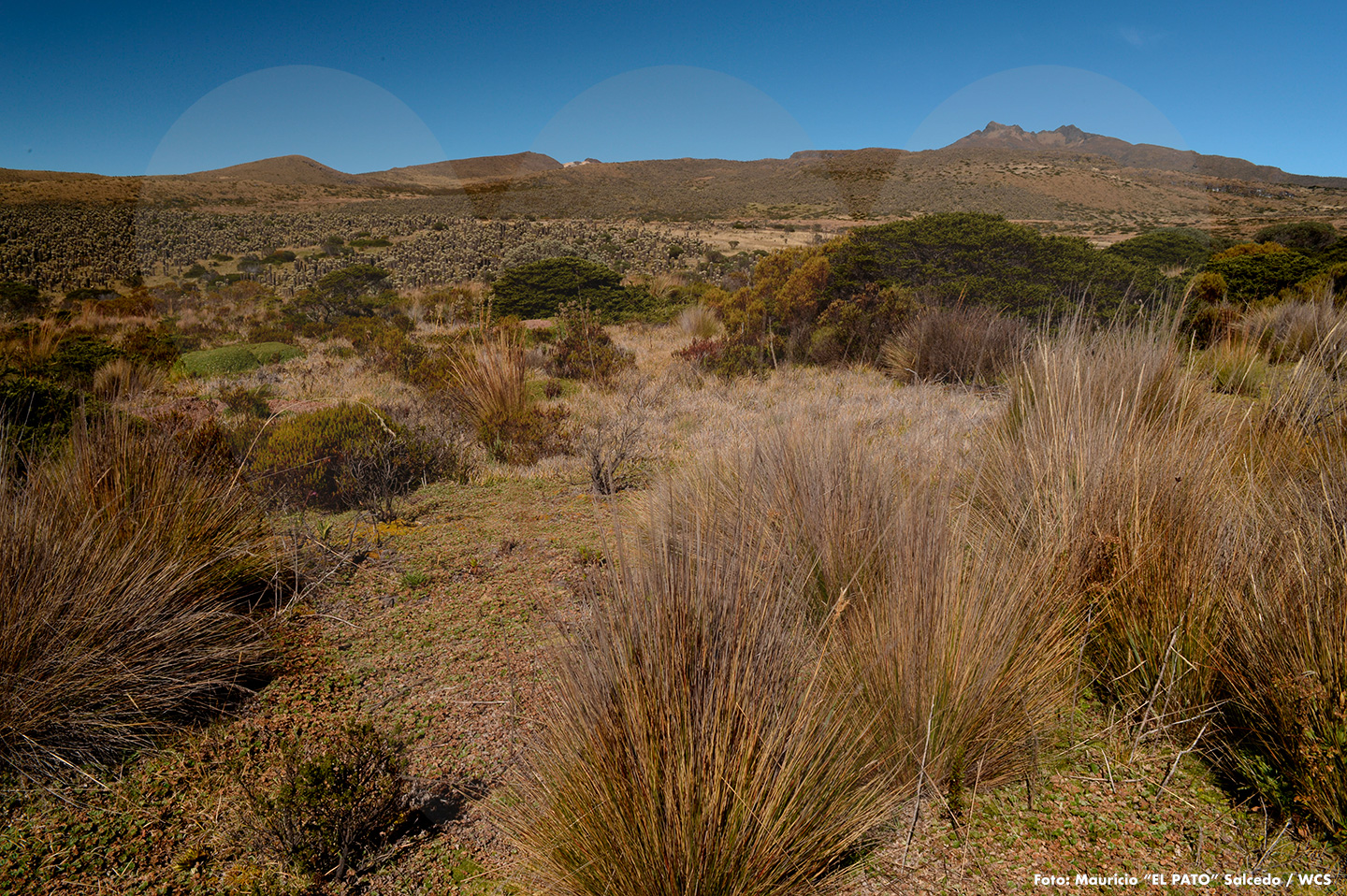This is how Érika Nadachovsky, biologist of the Regional Environmental Authority of Risaralda (Carder) and professional of the Territorial Environmental Management Sub-direction, summarizes the recuperation process of 258 hectares of paramo, located within Los Nevados National Natural Park, that were degraded by livestock farming. This initiative is part of the project ‘Proyecto Páramos Biodiversidad y Recursos Hídricos en los Andes del Norte’, financed by the European Union. With the aim of restoring original paramo landscapes in part of the ecosystem, nine thousand native plants were planted.

In Colombia, paramos are strategic ecosystems. This means that their continuity in the territory supports the survival of hundreds of animals (at least 170 species among reptiles, amphibians and mammals, according to the Alexander von Humboldt Institute), and of 17 percent of the national flora diversity, among which the exclusive frailejones, with over 80 different species, stand out. And we must add the welfare they provide for millions of people, supplying 70 percent of the population with drinkable water.
With 36 paramo sites, the country is a privileged territory, as it includes more than 50 percent of the paramos existing in the world, located between the Andean forests and the glaciers. Paramos take advantage of rain and fog to supply big water flows. Many rivers, such as the Magdalena, the Cauca, the Meta and the Patía, were originated in paramos. A crucial value that is not represented in the efforts made to protect them, as all the paramos in the territory face some threat. When it is not livestock farming, it is agriculture that destroys them with corn, potato or barley crops, plus the additional risks of intentional or non-intentional fires. If not the above two, illegal gold or coal mining causes irrecoverable damage. And, in the absence of all three factors, climatic change compels their species to adapt rapidly to different temperatures, which is not always possible.
Conclusion: a country with paramos, but with intimidated paramos, must have a broad knowledge to understand how to restore them and give them, in some way, a new opportunity, and thus be able to continue enjoying their benefits.
And this is what the project ‘Proyecto Páramos: Biodiversidad y Recursos Hídricos en los Andes del Norte’ has, at least partially, achieved, says Érika Nadachovsky, biologist of the Regional Environmental Authority of Risaralda (Carder). The initiative, with the participation of the Humboldt Institute, WCS Colombia and National Natural Parks of Colombia and financed by the European Union, seeks to contribute to the stability and the recuperation of threatened paramos in Ecuador, Perú and Colombia, among them Santurbán, Las Hermosas and Rabanal and part of the paramo of Los Nevados National Natural Park precisely where, says Érika, results have been flattering.

She has been permanently involved with the restoration process in this national protected area that covers part of the departments of Quindío, Tolima, Caldas and Risaralda. And she can, therefore, say that the outcome has been, among other things, “very organized, original and with results applicable in many other regions of the country.”
Can you summarize in simple words what has been done in Los Nevados?
What was achieved was the recuperation or restoration of the vegetation of a paramo zone located very near the Laguna del Mosquito (in the El Bosque rural settlement), historically very touristic and affected by livestock farming. Work was focused on 258 hectares with some connection with the Laguna del Otún and benefiting bodies of water. Many areas have been degraded due to livestock fattening practices that use and cover huge spaces, where cows eat the native vegetation of the paramo and the high Andean forest, invasive species abound and compact the soil as they walk.
Is that degradation recent or does it have precedents since the creation of Los Nevados National Park?
When the park was declared, nearly 60 families lived there, but many left due to the restrictions imposed by a protected zone. Most of them sold their farms. Only 14 kept their properties and have titles over 2000 hectares, mostly land affected by inadequate livestock management. Their animals surpassed that area, finally covering 7000 hectares, neighboring lands lately purchased by government institutions.
How was the community organized to accomplish work?
We reached agreements with the inhabitants, who accepted that part of the territory they were using should not be dedicated to livestock farming. We defined fences and boundaries and agreed on isolations to keep cattle away from ecological restoration zones. We also left a free space for passive recuperation, for nature itself to restore it.
How was the process of planting and recuperation?
Summarizing, a free area was left for natural recuperation. And another zone, where this natural process was no longer possible due to the extent of the damage done, was intervened. We planted nine thousand plants of ten different species, like frailejones, shrubs and grasses, all isolated from livestock influence. Some were direct plantings, but other specimens were previously reproduced in two plant nurseries. We had a survival percentage of over 90 percent in these planting processes. This, regardless of an important climate variability, heavy rains at times and also moments of drought.

In this case, the damages to the paramo were due to livestock farming. Could this same model be reproduced for paramos degraded due to agriculture?
Yes, it is a method that can be taken to any paramo, imitating the process of reproduction and monitoring of plants. However, I must mention that it is important to keep in mind that, in a restoration due to agricultural damage issues will not necessarily be exact to those of a soil degraded by livestock farming. For example, soil compaction may be different; or humidity or altitude, among other things.
What is the difference between this restoration process and the one conducted some years ago in the Laguna del Otún, affected by a fire that burned 4000 hectares in 2006?
One very important difference is that the Laguna del Otún restoration was done to solve damage caused by fire. Communities were not involved, monitoring was not done and no information was left to review actions or results for reproduction in the future and in other departments. The contrary of what we did at Los Nevados.
What will be done with communities to avoid their recurrence to unsustainable and disorganized livestock farming and motivate them to maintain or advance in an organized activity supporting the ecosystem?
The idea is for them to gradually reduce the number of livestock, while we support them with other processes. Some families have already agreed to control livestock and have it graze in specific places, away from the restoration achieved and those 5000 hectares that the animals sometimes invade and that are Government property. We believe we can involve the population with payments for environmental services, giving them the opportunity to receive some income. For example, payments for the conservation of their surroundings in return for the reduction of their herds. We are working with different organizations that cooperate with local communities. If cattle comply with sanitary requisites, they can be easily sold. The Instituto Colombiano Agropecuario (ICA) (Colombian institute for agriculture and livestock farming) helps them with this procedure. The Technological University of Pereira helps communities with green business ideas and the design of eco-tourism services (as suppliers of these services) with which they can value their territory, protect it from disorganized tourism and, at the same time, defend the restored area. The organization of some routes is already in progress.
What comes now for the restored polygon?
It will be under the care of National Natural Parks of Colombia. We handed it over to them in perfect conditions, as planned. The care and progress of what we achieved depends now of its officials, through a monitoring process that will hopefully lead, in some years, to a paramo very similar to the original one. The idea, for its future, is the existence of natural processes of pollination, of seed dispersion and the capability of regeneration, year after year, of the recuperated area, on its own. Due to the pandemic and the effects of Covid-19, the work planned was suspended. Its continuation, the success of this process and the replication of its good results in other regions of Colombia, now depend on National Parks.
